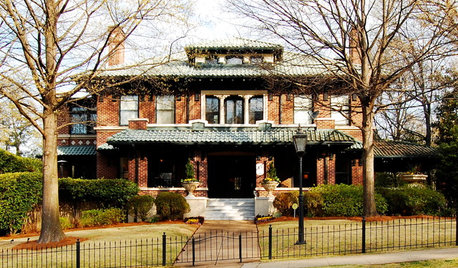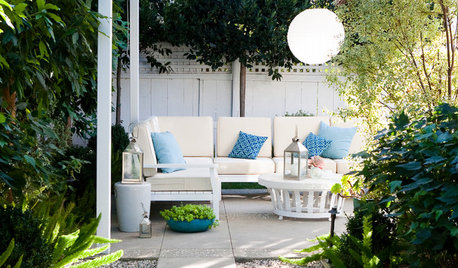Big Project: Leaves, Grass, Etc.
barten
15 years ago
Related Stories

FALL GARDENING5 Ways to Put Fall Leaves to Work in Your Garden
Improve your soil and yard the organic way with a valuable garden booster that grows on trees
Full Story
LAUNDRY ROOMSRoom of the Day: The Laundry Room No One Wants to Leave
The Hardworking Home: Ocean views, vaulted ceilings and extensive counter and storage space make this hub a joy to work in
Full Story
DECLUTTERINGDownsizing Help: Choosing What Furniture to Leave Behind
What to take, what to buy, how to make your favorite furniture fit ... get some answers from a homeowner who scaled way down
Full Story
REMODELING GUIDESInterior Brick: Paint it or Leave It?
Here's how to know if covering that brick is a sin or solution
Full Story
ARCHITECTUREStates of Style: Alabama’s Icons Leave Their Mark
In the first of a new series, discover the natural beauty, the architectural icons and some of our favorite homes deep in the heart of Dixie
Full Story
LANDSCAPE DESIGNIs It Time to Consider Fake Grass?
With more realistic-looking options than ever, synthetic turf can be a boon. Find the benefits and an installation how-to here
Full Story
GARDENING GUIDESSmall Gem Lawns: More Impact From Less Grass
Instead of letting the lawn sprawl, make it a shapely design element in your yard. You’ll reap benefits both practical and aesthetic
Full Story
LIFEFall Planning for a Successful Big Spring Party
Get started now on assessing, completing home projects and cleaning to keep party stress and effort to a minimum come spring
Full Story
GREEN BUILDINGWater Sense for Big Savings
Keep dollars in your pocket and preserve a precious resource with these easy DIY strategies
Full Story
INSPIRING GARDENSInside Houzz: A Waterfront Property Ditches the Grass for a Garden
New drought-tolerant plantings and outdoor gathering spaces help this California backyard take in the view without wasting space or water
Full Story






bpgreen
bartenOriginal Author
Related Professionals
Allen Landscape Architects & Landscape Designers · Holly Springs Landscape Architects & Landscape Designers · West Milford Landscape Architects & Landscape Designers · Windham Landscape Architects & Landscape Designers · Oatfield Landscape Architects & Landscape Designers · Cedar Hill Landscape Contractors · Dunwoody Landscape Contractors · Lake Worth Landscape Contractors · Natick Landscape Contractors · Setauket-East Setauket Landscape Contractors · Soddy Daisy Landscape Contractors · Wanaque Landscape Contractors · Burleson Swimming Pool Builders · Lisle Swimming Pool Builders · Placentia Swimming Pool Buildersbpgreen
lou_spicewood_tx
dchall_san_antonio
bartenOriginal Author
dchall_san_antonio
bpgreen
dchall_san_antonio
bpgreen
bartenOriginal Author
lou_spicewood_tx
bartenOriginal Author
bpgreen
dchall_san_antonio
bpgreen
lou_spicewood_tx
bartenOriginal Author
lou_spicewood_tx
dchall_san_antonio
lou_spicewood_tx
dchall_san_antonio
bartenOriginal Author
lou_spicewood_tx
lou_spicewood_tx
dchall_san_antonio
bartenOriginal Author